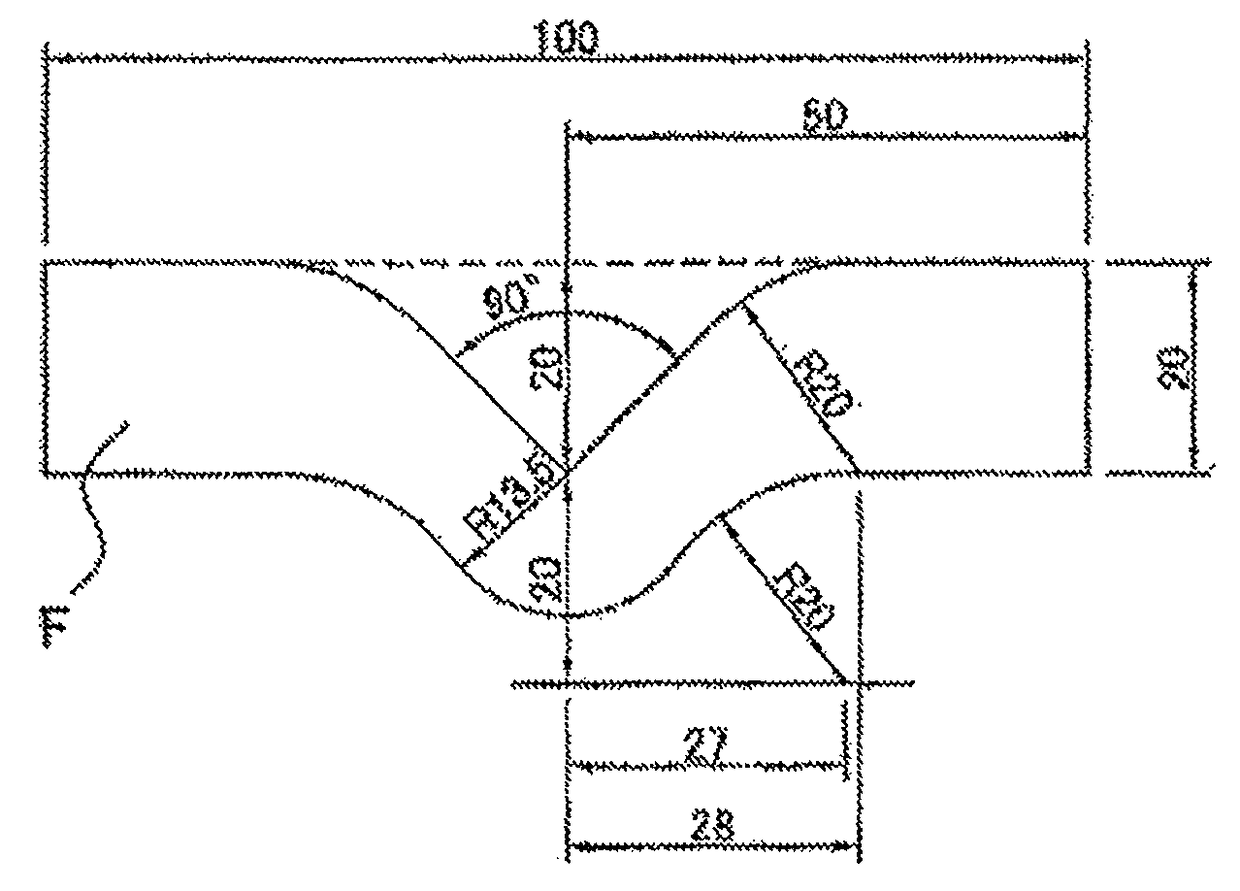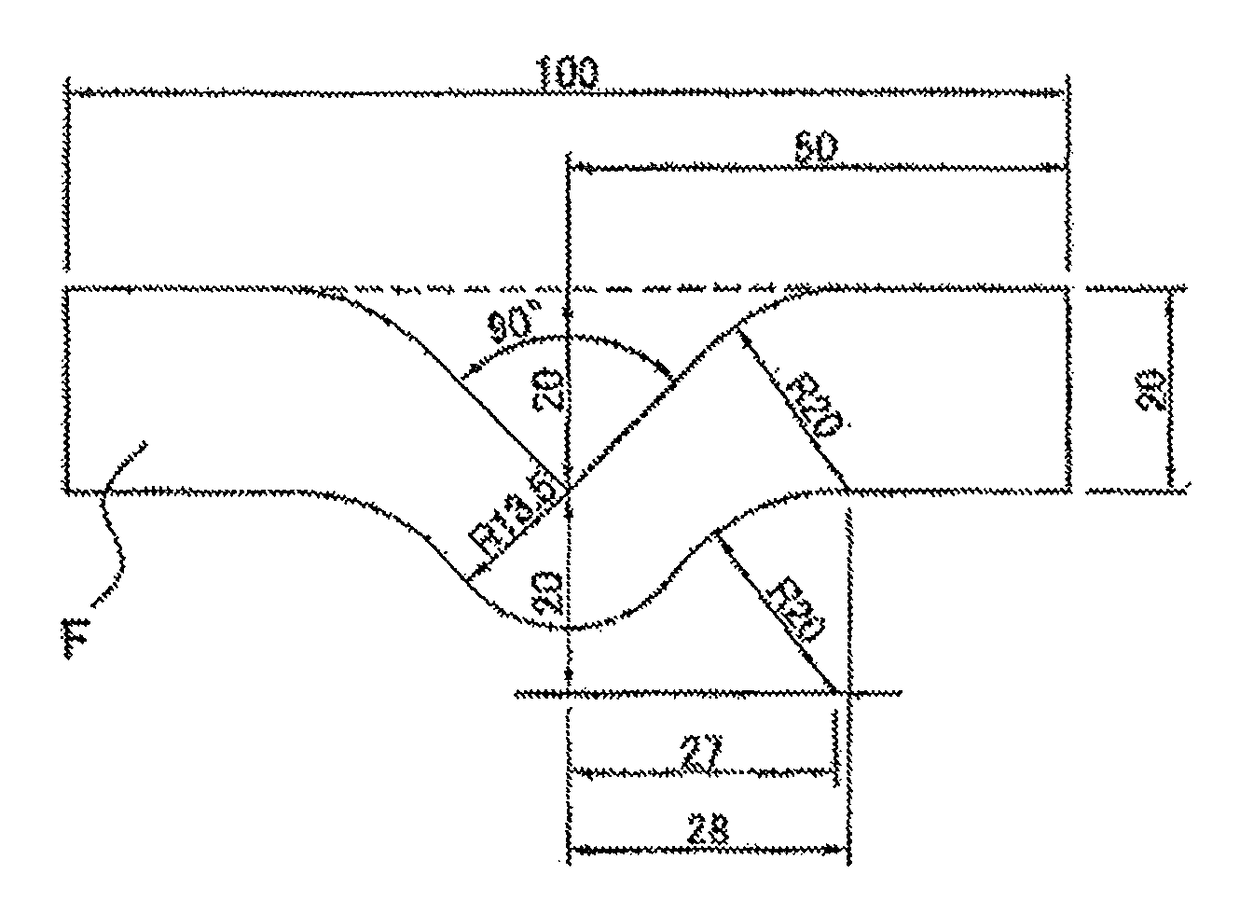Heat-shrinkable polyester film
a polyester film, heat-shrinkable technology, applied in the direction of chemistry apparatus and processes, synthetic resin layered products, transportation and packaging, etc., can solve the problems of difficult attachment of heat-shrinkable film to cylindrical members at high speed, film stretched only in the width direction, and poor final shrinkage in the final state of heat-shrunk film, etc., to achieve high mechanical strength, high shrinkage efficiency, and wound very efficiently within a short period of time
- Summary
- Abstract
- Description
- Claims
- Application Information
AI Technical Summary
Benefits of technology
Problems solved by technology
Method used
Image
Examples
example 1
[0090]Each of the polyesters 1 to 3 has as a main constituent unit, a constituent unit composed on terephthalic acid and ethylene glycol, but also contains as a by-product a constituent unit composed of terephthalic acid and diethylene glycol at a ratio of approximately 0.4 mol % to all constituent units. Polyester 1 and polyester 2 specified above were mixed at a weight ratio of 93:7 and charged into an extruder. Thereafter, the mixed resin was molten at 280° C. extruded from T-die, wound around a rotating metal roll cooled at the surface temperature of 30° C. and thereby quenched, so that an unstretched film having a thickness of 240 μm was obtained. At this step, the take-up speed (rotation speed of the metal roll) of the unstretched film was approximately 20 m / minute, and Tg of the unstretched film was 75° C. Thereafter, the unstretched. was introduced into a tenter (first tenter) in which a lateral stretching zone, an intermediate zone and an intermediate heat treatment zone we...
example 2
[0094]A biaxially stretched film having a thickness of approximately 30 μm was obtained in the same manner as in Example 1 except that the lateral stretch ratio in the first tenter was changed to 4.1 times, and the relaxation ratio in the second tenter was 2.5%. The results of evaluation are shown in TABLE 3. An excellent film well balanced in shrinkage finish property, perforation-opening ratio, and a rupture elongation in the width direction after aging was obtained.
example 3
[0095]A biaxially stretched film having a thickness of approximately 30 μm was obtained in the same manner as in Example 1 except that the thickness of the unstretched was changed to 285 μm, the longitudinal stretch ratio was changed to 2.5 times, and the relaxation ratio in the second tenter was 5%. The results of evaluation are shown in TABLE 3. An excellent film well balanced in shrinkage finish property, perforation-opening ratio, and a rupture elongation in the width direction after aging was obtained.
PUM
| Property | Measurement | Unit |
|---|---|---|
| heat shrinkage | aaaaa | aaaaa |
| heat shrinkage | aaaaa | aaaaa |
| heat shrinkage | aaaaa | aaaaa |
Abstract
Description
Claims
Application Information
 Login to View More
Login to View More - R&D
- Intellectual Property
- Life Sciences
- Materials
- Tech Scout
- Unparalleled Data Quality
- Higher Quality Content
- 60% Fewer Hallucinations
Browse by: Latest US Patents, China's latest patents, Technical Efficacy Thesaurus, Application Domain, Technology Topic, Popular Technical Reports.
© 2025 PatSnap. All rights reserved.Legal|Privacy policy|Modern Slavery Act Transparency Statement|Sitemap|About US| Contact US: help@patsnap.com


